Matching ImpedancesImpedance is the total opposition to alternating current flow by an electric circuit, equal to the square root of the sum of the squares of the resistance and reactance of the circuit and usually expressed in ohms. Symbol: Z. Using a transformer to match the impedances of a source and load provides maximum power transfer between them. Examples of situations where this is significant include an audio amplifier and its speakers, a radio transmitter and its antenna, or a microphone and its console input. Mics are generally classified as either low impedance (LO-Z) 50 to 600 ohms, or high impedance (HI-Z) 10k to 40k ohms. Professional microphones tend to fall into the low-impedance category. Commercially manufactured inline impedance matching transformers are readily available, and are not limited to those presented here. 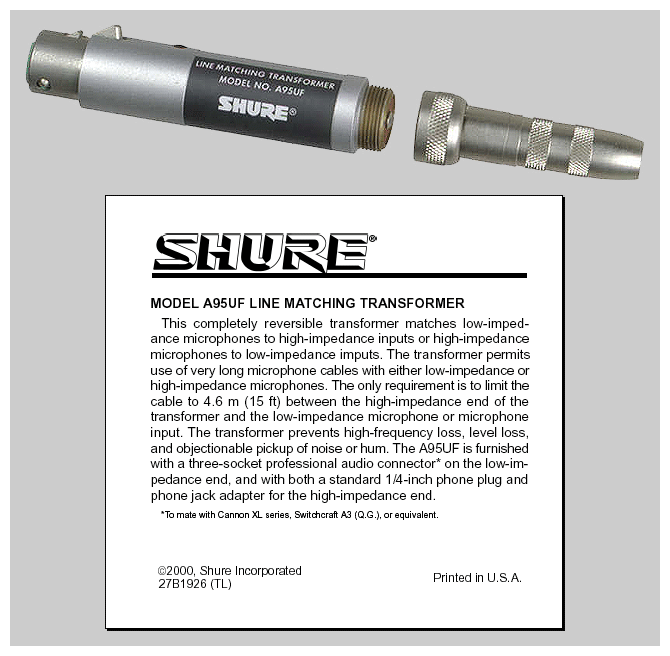
The Electro-Voice Model 502CP and the Shure Model A95UF matching transformers are physically and electrically similar. As can be observed, the Shure unit has a removable quarter-inch phone plug, while the Electro-Voice phone plug is integral. Furthermore, the E-V’s input impedance is fixed at 150 ohms, while the Shure unit’s input impedance can be set to accommodate 75 to 300 ohms, or 19 to 75 ohms, by disassembling the device and exchanging two leads. The procedure is covered in the Shure A95UF Data Sheet, which is downloadable from this page. 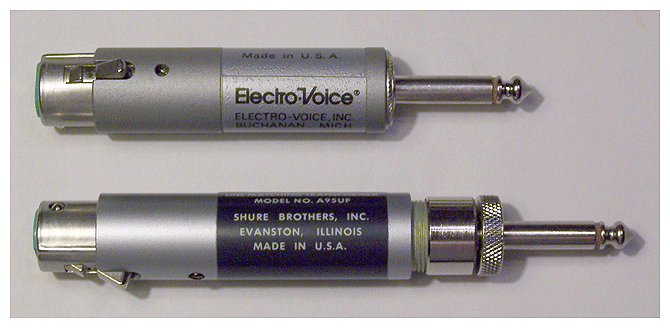
Because of their relatively low voltage output level, mics should be used in circuits that are compatible with their impedance. If this is not possible, a matching transformer should be used. Two examples are shown above. This helps to ensure that maximum power transfer will occur from the microphone into the preamplifier or amplifier to which it is connected. As can be read in the Shure commentary (above), low-impedance circuits are able to accommodate long mic cable runs without increasing noise nor reducing signal strength. 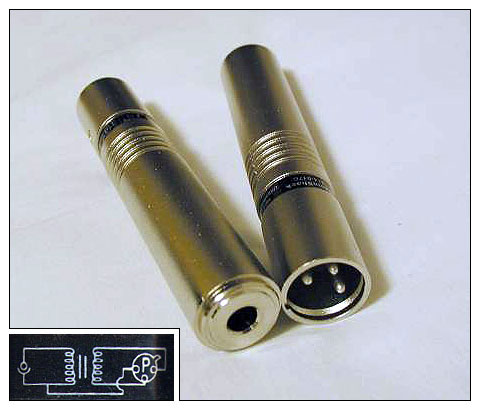
Radio Shack offers its own version, 274-017C, which provides a high-impedance unbalanced input via a quarter-inch phone jack, and a low-impedance balanced output via a male XLR (A3M). This is the opposite configuration from the other two companies’ transformers, which adapt a low Z input to a high Z output.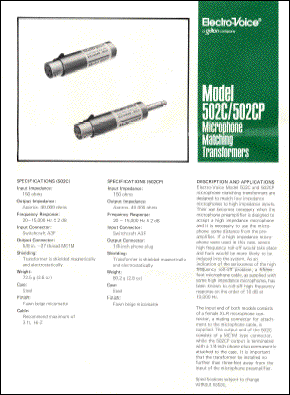
Download the E-V 502CP Data Sheet.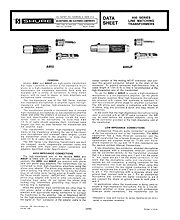
Download the Shure A95UF Data Sheet.
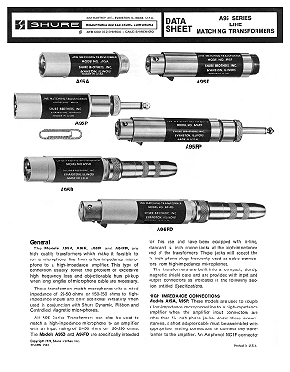
Download the Shure A95 Series Data Sheet.
|